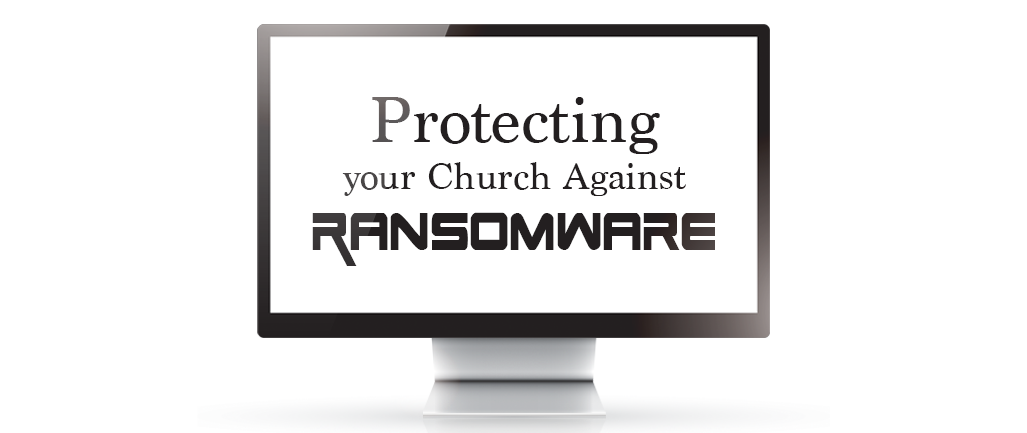
A few weeks ago, the Lutheran Church Missouri Synod posted an article about a church who recently fell victim to a ransomware attack.
We realize that without proper knowledge, many churches could potentially become victims of ransomware as well, so we wanted to share some helpful information with you.
What is Ransomware?
Ransomware is one of a number of different types of malicious software, otherwise known as malware. Ransomware, as the name implies, holds the victim’s computer hostage and demands money in order to release the computer from its control.
There are many different types of ransomware. Some take the form of threatening messages that appear on your screen, while others come from cybercriminals impersonating government agencies. The most dangerous type, however, comes when the cybercriminal encrypts the computer's data, making it unreadable for the user.
How do I protect my church against ransomware?
Regardless of its variation, a ransomware attack can be detrimental to you and your church. Church management software stores years and years worth of membership data, contribution records, and personal information. Think for a moment what it would be like to lose all that data in an instant!
Thankfully, there are a few easy steps you can take to prevent your church from being exposed to a ransomware attack:
- Use an Anti-virus software package and keep the virus definitions up to date
- Keep Windows and other applications up-to-date
- Avoid clicking on links or opening attachments from emails where you do not know the person or have no reason to expect it.
- Take care on receiving emails with links and/or attachments from people that are on your contact list.
- Only download software from known and trusted organizations.
- To get this process started, first establish a regular schedule for backing-up data at your church.
- Next, decide where the back-up will be stored. Off-site backups are ideal because they keep your church information safe, even if every computer on your network becomes infected.
- Lastly, decide who will be in charge conducting the back-up and how they will maintain the safety of the data in their posession.
We hope that these tips will help you to keep your membership information safe and secure! If you would like to learn more about ransomware and how you can protect against it, please check out our e-book titled
"Protecting Your Church Against Ransomware."
{{cta('49617639-24a9-431d-8c1c-52fbfcf5e51f')}}























